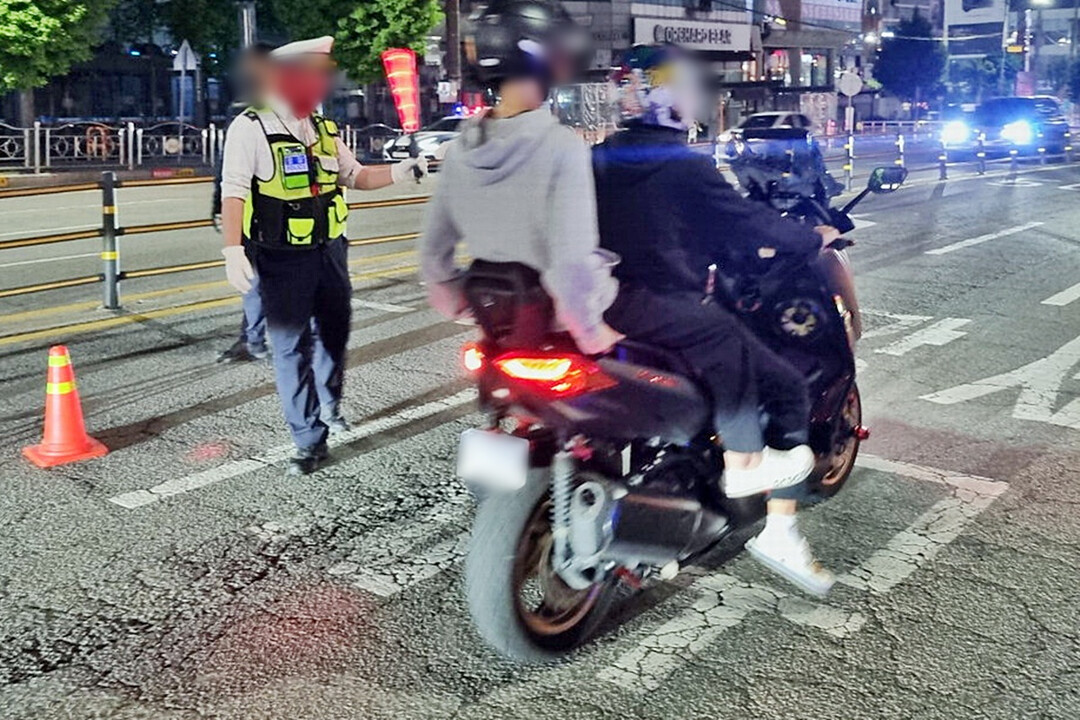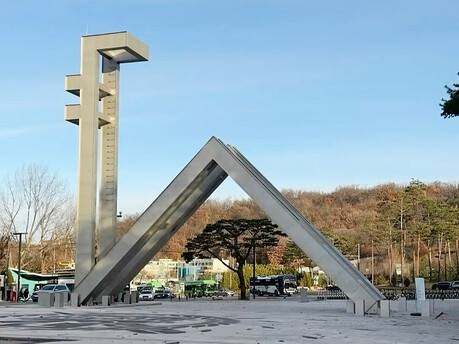
In response to persistent and escalating public complaints regarding motorcycle noise, the South Korean government has officially commenced a feasibility study into a nationwide initiative to convert internal combustion engine (ICE) motorcycles to electric powertrains. This ambitious electrification project could potentially lead to a significant transformation in urban mobility, paving the way for quieter electric delivery motorcycles to become a common sight on city streets within the coming years.
The Ministry of Environment recently initiated a comprehensive review to assess the economic viability and technological feasibility of retrofitting existing ICE motorcycles with electric motors and battery systems. A particular focus of the study is to address the demands of the burgeoning delivery industry, where motorcycles frequently cover substantial distances daily. To this end, the Ministry is exploring conversion scenarios for electric motorcycles with a peak rated output ranging from 4 to 7 kilowatts, a power level deemed necessary to meet the operational requirements of delivery services that often involve daily travel exceeding 100 kilometers.
Analyzing Electrification Costs and Benefits
A crucial aspect of the Ministry's evaluation involves a thorough cost-benefit analysis of the proposed electrification program. The initial focus will be on small to medium-sized ICE motorcycles, which constitute a significant portion of the delivery fleet. Plans are also underway to conduct pilot retrofit projects to gain practical insights into the conversion process and its associated challenges. This proactive approach reflects a recognition that the current adoption rate of newly manufactured electric motorcycles has fallen short of initial expectations.
While electric motorcycles offer compelling advantages in terms of environmentalFriendliness and maneuverability, particularly in congested urban environments, their limited range per charge has been a major impediment to widespread adoption. Currently, the average range of an electric motorcycle on a single charge is approximately 70 to 80 kilometers. This range is often insufficient for delivery drivers who routinely travel distances exceeding 100 kilometers per day. Consequently, the retrofitting of existing ICE vehicles presents a potentially viable alternative, particularly concerning subsidies and vehicle registration processes.
Drawing Lessons from International Precedents
The South Korean government is also examining international best practices to gauge the potential for successful nationwide motorcycle electrification. A notable example is Indonesia, which offers substantial subsidies, amounting to approximately 840,000 Korean Won, for the conversion of 110-150cc ICE motorcycles to electric. This initiative has yielded impressive results, with the number of converted vehicles increasing sevenfold within a single year. Such compelling international examples lend significant weight to the ongoing discussions regarding electrification in South Korea.
The Core Benefits of Electric Motorcycles: Alleviating Noise Stress
The advantages of electric motorcycles extend beyond mere emissions reduction. A particularly significant benefit is the elimination of the characteristic exhaust noise associated with ICE motorcycles. This has the potential to substantially improve the quality of life for urban residents, who are often subjected to considerable noise pollution. Given the frequent movement of delivery motorcycles through narrow residential streets, the transition to electric power is expected to have a profound positive impact on noise levels.
Motorcycle noise has long been a major source of complaints in densely populated urban areas. Residents have frequently reported disturbances caused by motorcycles, especially those with illegally modified mufflers, operating late at night. The enforcement of noise regulations has also proven to be a persistent challenge. In this context, the widespread adoption of electric motorcycles emerges as a promising solution to simultaneously address both noise and air pollution.
Addressing Technical Hurdles and Infrastructure Gaps
Despite the compelling benefits, several technical limitations and infrastructure deficiencies need to be addressed to ensure the successful implementation of a nationwide electric motorcycle program. Key challenges include the expansion of battery swapping infrastructure, improvements in battery range, and the reduction of conversion costs. Overcoming these hurdles will be crucial in fostering positive market reception and widespread adoption. The Ministry of Environment acknowledges these challenges, stating that while the initiative is currently in the conceptual stage, the economic viability appears promising, and further technical assessments will be conducted.
Expanding on the Challenges and Potential Solutions:
Beyond the points mentioned in the original article, several other factors will likely influence the feasibility and success of this ambitious project.
Battery Technology and Infrastructure:
Battery Swapping vs. Traditional Charging: The article briefly mentions battery swapping. This model, where depleted batteries are quickly exchanged for fully charged ones, could be particularly advantageous for delivery riders who cannot afford lengthy downtime for traditional charging. However, establishing a widespread and standardized battery swapping infrastructure will require significant investment and coordination among various stakeholders, including battery manufacturers, charging station operators, and the government.
Battery Standardization: For a battery swapping system to be efficient, battery standardization across different motorcycle brands and models would be highly beneficial. This would allow for a common pool of batteries to be used across a wider range of vehicles, reducing costs and increasing accessibility.
Charging Infrastructure for Personal Use: While battery swapping might cater to commercial users, convenient and accessible charging infrastructure will still be necessary for individual owners of electric motorcycles. This includes public charging stations in residential areas, workplaces, and along major transport routes.
Economic Considerations:
Initial Conversion Costs: The cost of retrofitting an ICE motorcycle with an electric powertrain is a significant factor. Government subsidies, as seen in Indonesia, will likely be crucial in making the conversion economically attractive to motorcycle owners, especially those in the delivery sector who operate on tight margins. The cost-benefit analysis will need to carefully consider the long-term savings from reduced fuel and maintenance costs against the initial investment.
Lifecycle Costs: A comprehensive economic analysis should also consider the lifecycle costs of electric motorcycles compared to their ICE counterparts. This includes the cost of batteries (including potential replacement costs), electricity consumption, and maintenance. Electric motorcycles typically have fewer moving parts, which could lead to lower maintenance costs over time.
Impact on the Second-hand Motorcycle Market: The introduction of a large-scale electrification program could impact the market value of existing ICE motorcycles. Policies might need to be implemented to manage this transition and prevent significant financial losses for current owners.
Technological Advancements:
Motor and Battery Efficiency: Ongoing advancements in electric motor and battery technology are crucial for improving the range, performance, and efficiency of electric motorcycles. Higher energy density batteries will lead to longer ranges without increasing weight or size, while more efficient motors will optimize power delivery and energy consumption.
Retrofit Kit Development: The development of standardized and cost-effective retrofit kits will be essential for scaling up the conversion process. These kits should be relatively easy to install and adaptable to a wide range of existing motorcycle models. Collaboration between research institutions, automotive component manufacturers, and motorcycle repair shops will be vital in this area.
Safety Standards: Ensuring the safety of converted electric motorcycles is paramount. Stringent safety standards for the conversion process, battery installation, and electrical systems will need to be established and enforced.
Social and Regulatory Aspects:
Public Awareness and Acceptance: Public awareness campaigns will be necessary to educate motorcycle owners and the general public about the benefits of electric motorcycles, address any misconceptions, and encourage adoption.
Regulatory Framework: The government will need to establish a clear regulatory framework for the conversion process, including vehicle registration, insurance, and safety inspections. This framework should be streamlined and supportive of the electrification initiative.
Training and Skill Development: A skilled workforce will be required to carry out the conversions and maintain electric motorcycles. Training programs for mechanics and technicians will need to be developed to support this new industry.
Potential for Expansion Beyond Delivery Services:
While the initial focus is on delivery motorcycles due to their high mileage and significant contribution to noise pollution, the electrification program could potentially be expanded to include personal-use motorcycles in the future. As battery technology improves and charging infrastructure becomes more widespread, electric motorcycles could become an increasingly attractive option for a broader range of consumers.
Conclusion:
The South Korean government's consideration of a large-scale electric motorcycle conversion program represents a significant step towards addressing the persistent issues of motorcycle noise pollution and reducing urban emissions. By learning from international experiences, carefully analyzing the economic and technical feasibility, and proactively addressing the challenges related to infrastructure, technology, and regulation, South Korea has the potential to become a leader in the electrification of two-wheeled transportation. The sight of quieter, cleaner electric motorcycles zipping through city streets may soon become a reality, promising a more peaceful and environmentally sustainable urban landscape for all residents. The success of this initiative will hinge on a collaborative effort involving government agencies, industry stakeholders, and the public, all working together to embrace this transformative shift in urban mobility.
[Copyright (c) Global Economic Times. All Rights Reserved.]






























